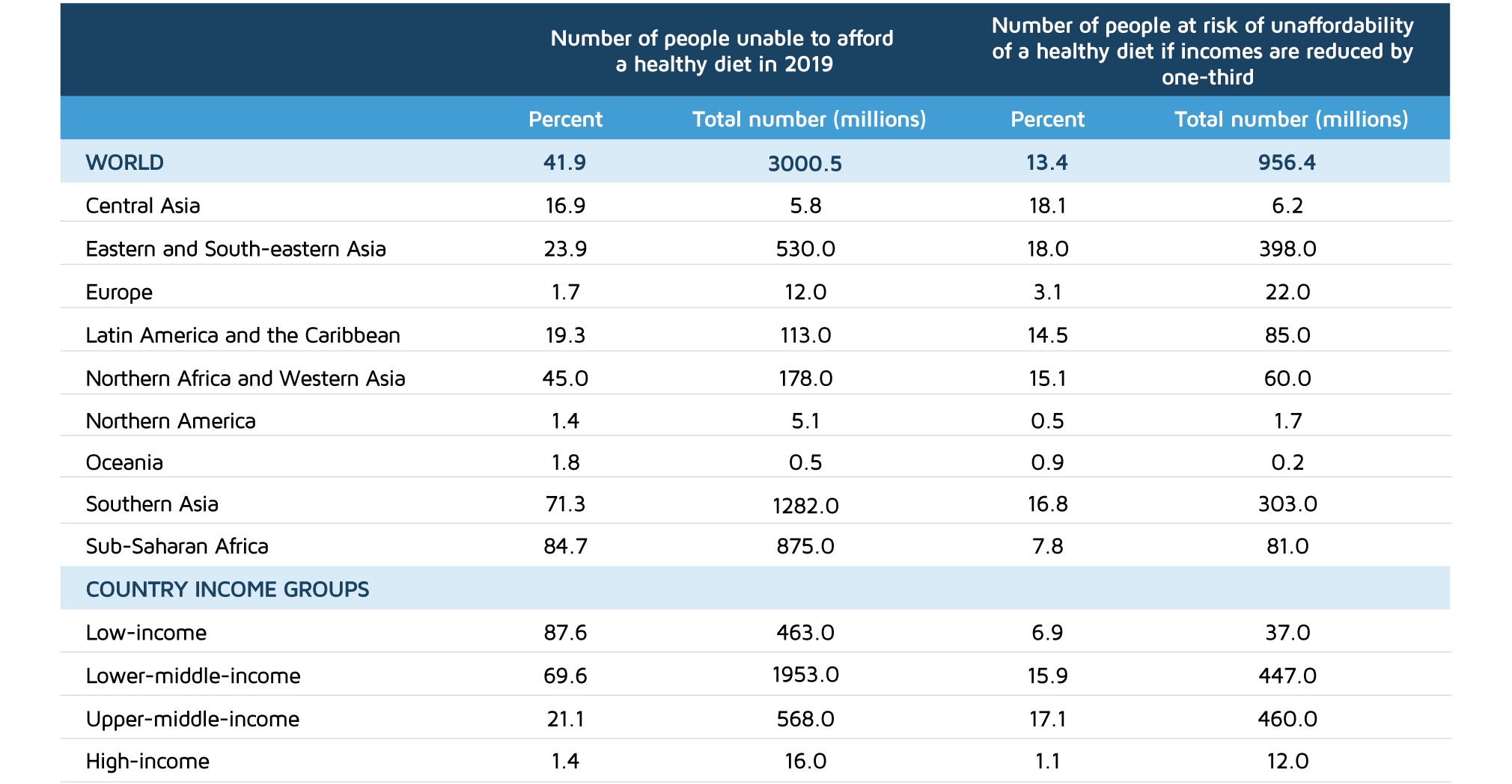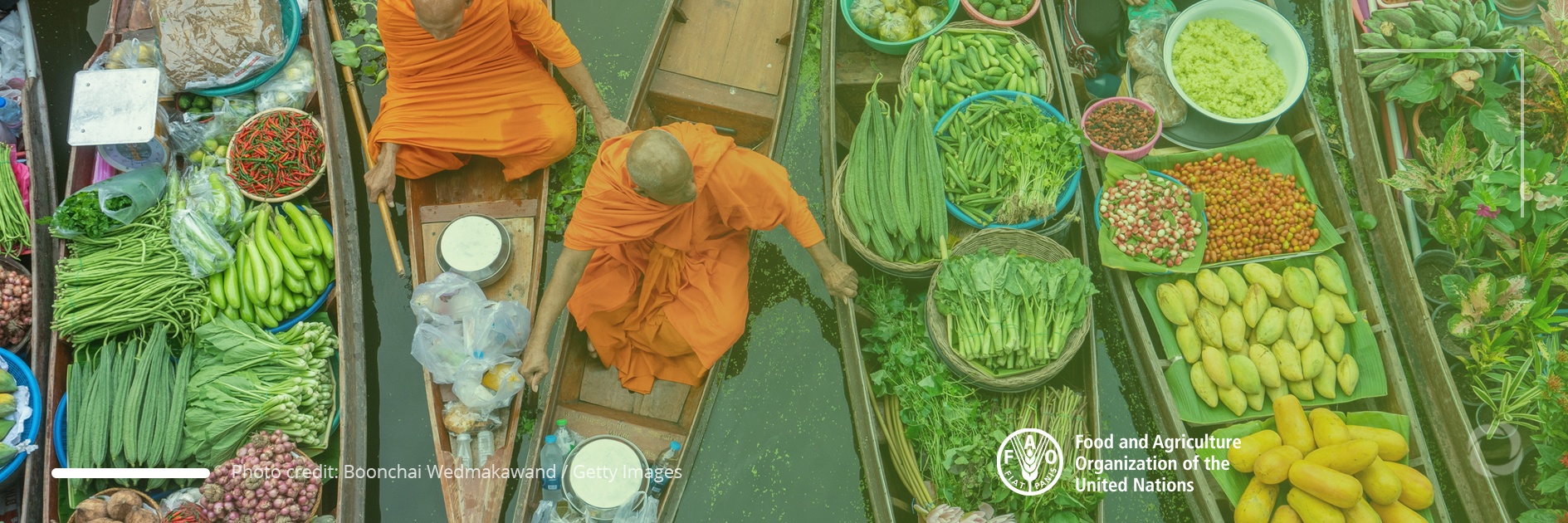Healthy diets are not available to 40% of people around the world and another one billion people are at risk of not being able to afford an energy-sufficient diet if their income were to further deteriorate. According to a recent report published by the Food and Agriculture Organization (FAO), agrifood systems are not resilient enough around the world, and therefore, to fight undernourishment, countries should make resilience part of their strategic planning.
While low-income countries have the highest vulnerability to income shocks that threaten basic dietary energy requirements, middle-income countries are no exception either. For instance, Brazil’s exports depend heavily on one trading partner as 60% of the export value comes from this, making the country vulnerable to shocks. Even developed countries such as Australia and Canada are not protected from shocks as the food distribution network involves long distances. The FAO stresses that in 50% of those countries analyzed, the termination of vital network links would increase local transport time by 20% or perhaps even more, causing food prices to increase.
In countries such as South Africa and Zambia (both lower-middle-income nations), 14% of the population run the risk of not meeting nutritional requirements if their earnings were to decrease by one-third while 18% and 31% of the populations, respectively, are already unable to meet those requirements in normal conditions.
Fig.1. Indicators of unaffordability of healthy diets

According to the FAO, to fight hunger around the world countries should make their agrifood systems resilient to unexpected shocks.
The new #SOFA2021 report shows that agrifood systems need to be able to absorb unforeseen shocks. We can achieve this by increasing resilience, connecting people to markets, keeping international markets functioning & investing in small & medium agrifood enterprises. #FoodSystems https://t.co/3959Dlr6ap
— FAO Director-General QU Dongyu (@FAODG) November 23, 2021
In general, agrifood systems involve all the activities required for the production of food and non-food agricultural products as well as their storage, processing, transportation, distribution, and consumption. Overall, through agrifood systems, 11 billion tons of food are produced annually with billions of people being employed within the system, directly or indirectly. FAO Director-General, QU Dongyu, in his speech at the virtual launch of the report noted:
“Agrifood systems provide food, feed, fiber, fuel, and a friendly environment for the world, and are a source of livelihoods for billions of people around the globe. The pandemic highlighted both the resilience and the weakness of our agrifood systems.”
The report analyses indicators of the resilience of agrifood systems including factors such as transport grids, trade movement, and the accessibility of healthy and diverse diets across 100 countries.
Commenting on the report, QU Dongyu tweeted, “The new #SOFA2021 report shows that agrifood systems need to be able to absorb unforeseen shocks. We can achieve this by increasing resilience, connecting people to markets, keeping international markets functioning, and investing in small and medium agrifood enterprises.”
In conclusion, the report states that countries should make resilience in agrifood networks a strategic part of their response to current and future shocks with an emphasis on diversification. At the same time, countries should also pay attention to network connectivity as well-connected agrifood systems are expected to be able to more effectively overcome interruptions.

